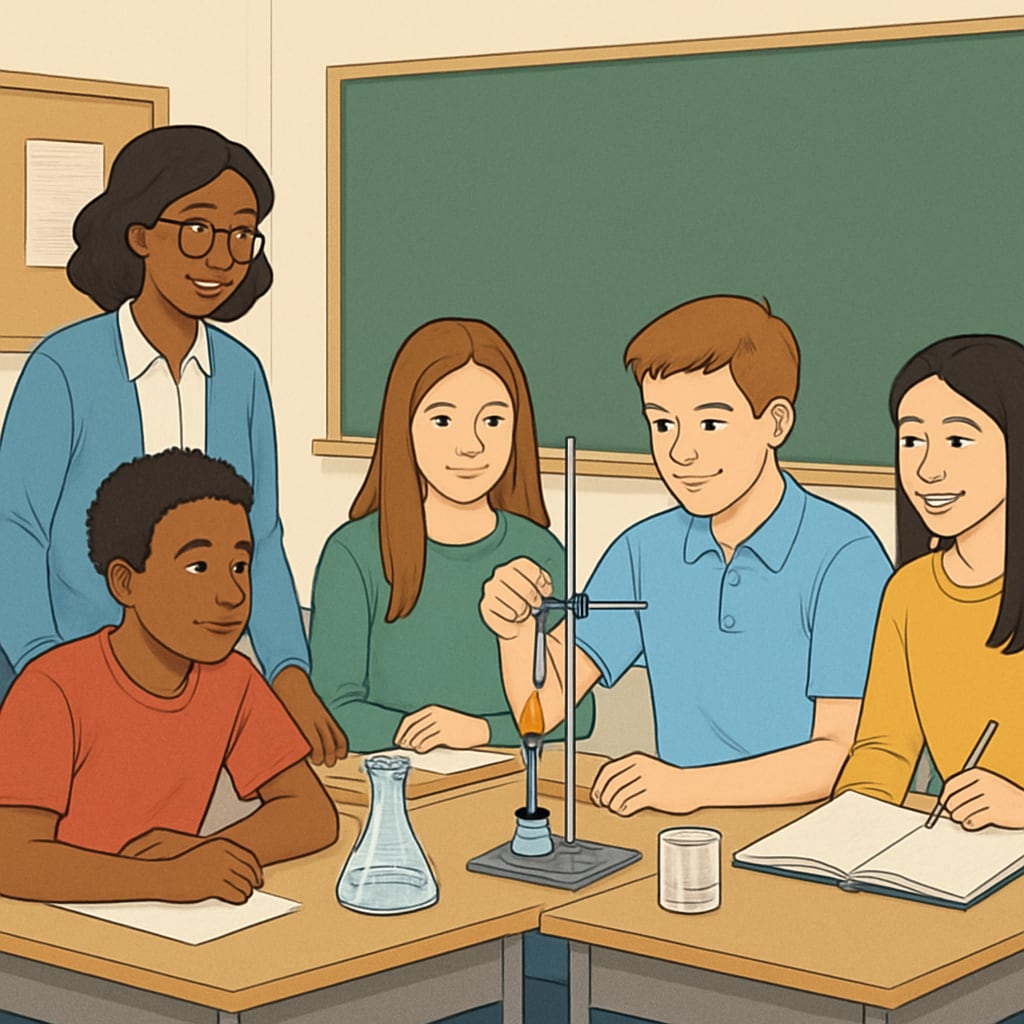High school science classes provide an excellent platform for fostering curiosity and critical thinking, but they can be particularly challenging for English learners (students whose primary language is not English). To ensure that all students succeed, educators must employ effective strategies tailored to the needs of English learners. By leveraging differentiated instruction and creating inclusive teaching environments, teachers can not only bridge the language gap but also empower students from diverse linguistic backgrounds to excel in science education.

Adopting Inclusive Teaching Practices
One of the most critical aspects of teaching science to English learners is fostering an inclusive environment where language barriers do not hinder learning. This requires a shift away from one-size-fits-all teaching methods and instead embracing cultural diversity and individual learning styles. For example, educators can integrate visual aids, hands-on experiments, and multimedia resources to make complex scientific concepts accessible to all students. This approach not only enhances comprehension but also reduces the reliance on language-heavy explanations.
Additionally, building a classroom culture that values diversity can have a profound impact on student engagement. Teachers can encourage students to share their unique perspectives and experiences, especially when discussing global scientific issues such as climate change or renewable energy. By validating their contributions, educators help English learners feel more confident and connected to the subject matter.
Utilizing Differentiated Instruction
Differentiated instruction is essential for addressing the varied needs of English learners in high school science classes. This teaching strategy involves tailoring lessons to accommodate students’ linguistic proficiency, prior knowledge, and learning preferences. For instance:
- Visual Learning: Incorporating diagrams, charts, and videos to explain scientific processes.
- Collaborative Learning: Group activities where students can work together to solve problems, allowing English learners to practice language skills in a supportive environment.
- Language Scaffolding: Providing sentence stems, glossaries, and bilingual resources to assist with academic vocabulary.
Moreover, differentiated instruction can include strategies like tiered assignments, where tasks are designed with varying levels of complexity based on students’ language abilities. As a result, English learners are challenged appropriately without feeling overwhelmed.

Leveraging Technology for Science Education
Technology plays a pivotal role in supporting English learners in science classrooms. Interactive tools such as educational apps and simulation software allow students to explore scientific concepts in a self-paced manner. For example, platforms like Khan Academy or National Geographic Education provide multilingual resources tailored to various learning levels.
Virtual labs and augmented reality applications also offer immersive experiences that make abstract topics tangible. These tools not only engage students but also minimize reliance on text-heavy materials, making science more accessible to English learners.
Assessing Progress and Providing Feedback
Effective assessment practices are crucial for tracking the progress of English learners in science. Teachers should use formative assessments, such as quizzes, concept maps, and oral presentations, instead of relying solely on traditional exams. These methods provide deeper insights into students’ understanding and language development.
Furthermore, constructive feedback should be specific and actionable, focusing on both content mastery and language improvement. For example, rather than simply marking errors, teachers can explain the reasoning behind corrections and suggest strategies for improvement.
In conclusion, high school science educators have a unique opportunity to support English learners by implementing differentiated instruction, fostering inclusive environments, and leveraging technology. By doing so, they can help students overcome language barriers and thrive academically, ensuring that every learner has the chance to succeed in science.
Readability guidance: Use short paragraphs, bulleted lists, and clear transitions to maintain engagement. Limit passive voice and prioritize active sentence structures. Distribute keywords evenly throughout the article to optimize SEO without overloading.


